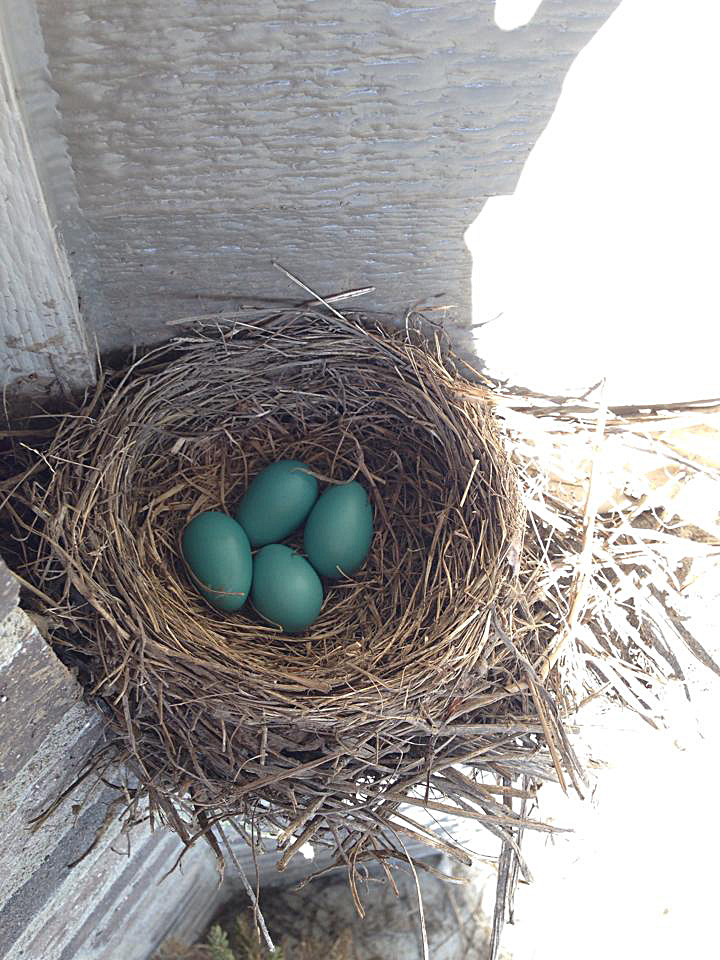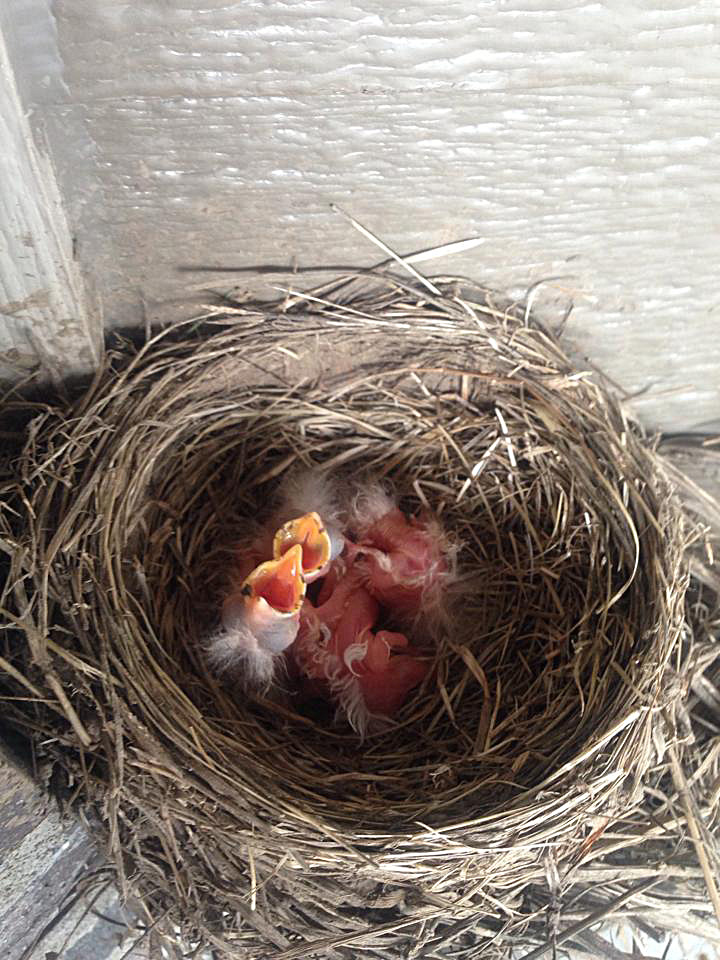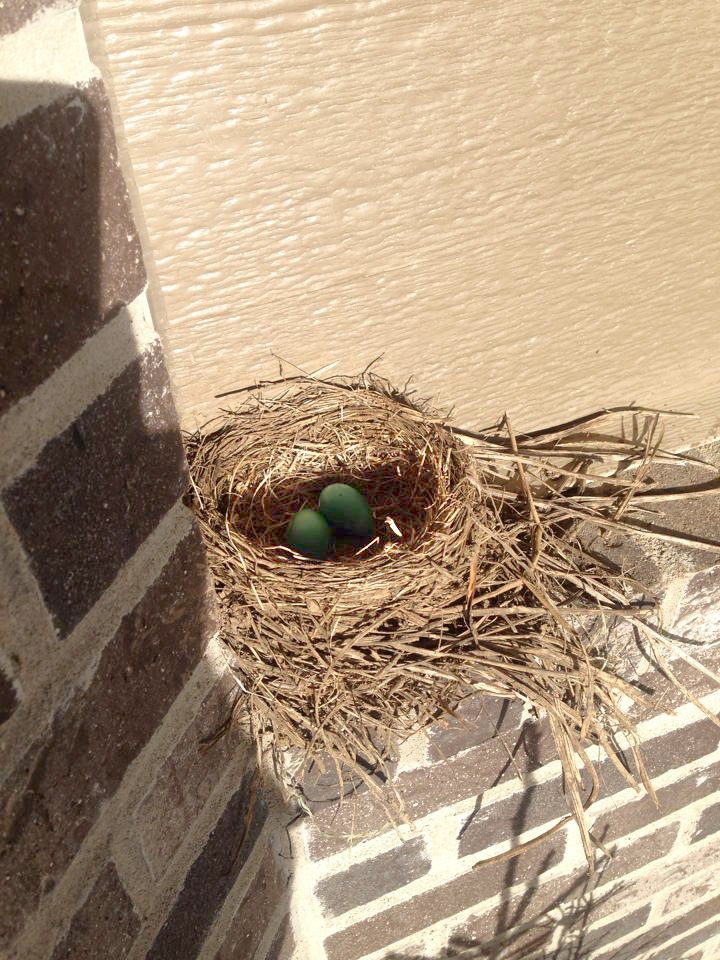 ,
,  ,
, 
One of my Memorial Day projects was to clean up an abandoned robin nest that had been built on the porch.
It took only a few minutes to rip the tidy round nest from its perch on the brick ledge and scrub away the mud with Dawn soap and water.
There, in the span of five minutes, went an entire week’s worth of robin construction.
Actually, it may have taken her only a day, but my husband kept insisting that she build elsewhere. Each time he ripped it down she’d put back another one, until I convinced him to let her keep it.
“You know, she’s just going to keep coming back,” I reasoned. “Let her raise her family there, and we’ll remove it when her chicks take flight.”
Secretly, I was looking forward to the little miracle of birth unfolding right there at eye level.
The arrival of cheery blue eggs was documented on my Facebook page, each with its own photo and announcement. “Our family is growing,” I posted on May 4 with a photo of four eggs.
And then we waited.
I worried the constant interruption of the front door opening and closing could interfere with nurturing.
One chilly night, we hosted a neighborhood gathering on the porch, and the poor eggs were left uncovered for several hours.
I imagined the mother robin waiting in distress from a nearby tree branch. “Stupid humans. Why don’t they leave my habitat alone?”
Of course her nest was planted squarely in human territory. It wasn’t our fault.
Just when I began to suspect a failure to hatch, the four eggs became four homely pink nestlings with thin skin and tiny yellow beaks — all wide open pointed upward, waiting for their next meal to drop in.
Their arrival called for another Facebook photo announcement. “Introducing Randy, Roland, Ramona and Rebecca,” I posted on May 19.
The introduction garnered dozens of likes and several comments, and I looked forward to keeping my Facebook friends posted on their development.
But the posts stopped there.
One by one the featherless hatchlings disappeared from the nest. The first such absence coincided with the discovery of a bloodstain near the patio door where the cat strolled by licking her chops.
The next unfortunate baby was found on the cement below the nest with a broken neck. Did it fall out? Was the mother robin pruning her brood? Was the cat to blame for this one, too?
Then one morning only one ugly chick remained in the nest, and it didn’t look very healthy. That evening, predictably, it was gone. Without a trace.
The fate of those doomed robins may forever remain unknown. But Darwin’s theory of survival has become pretty obvious in the chronicles of our little robin family: Nests built in nature result in healthy reproduction. Chicks born at cat level do not survive.
As I removed evidence of their existence last week, I reflected on their short life story. Rest in peace, Randy, Roland, Ramona and Rebecca. Let's hope your mother learned her lesson.


